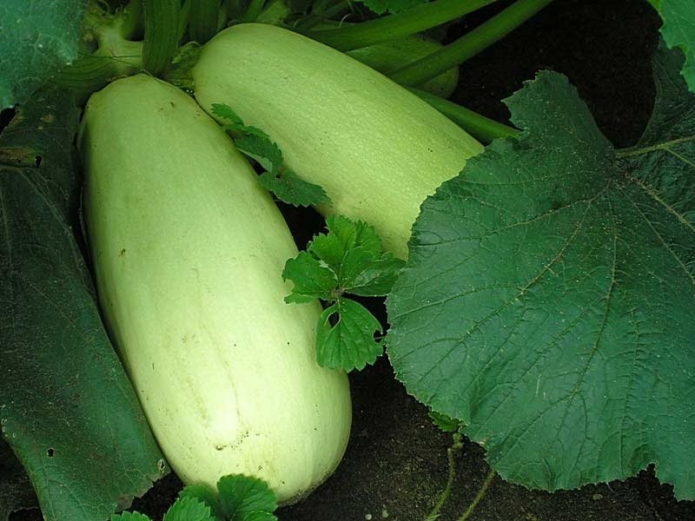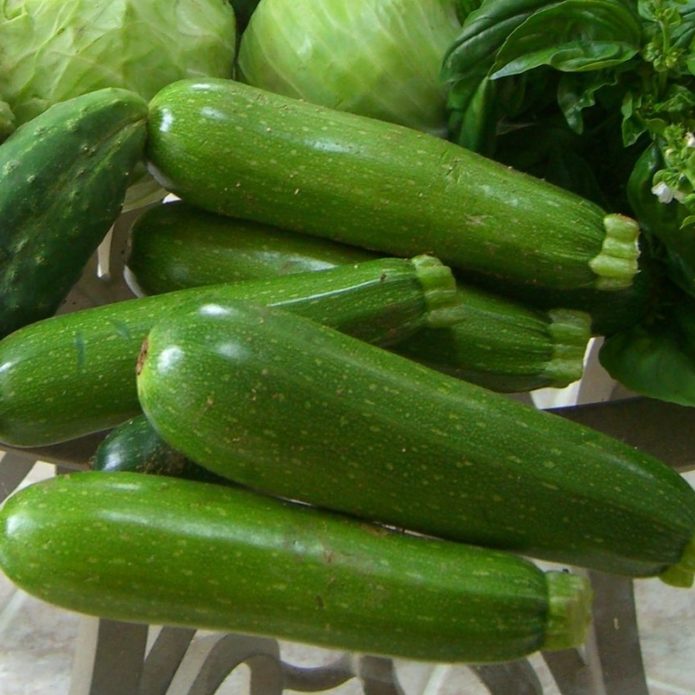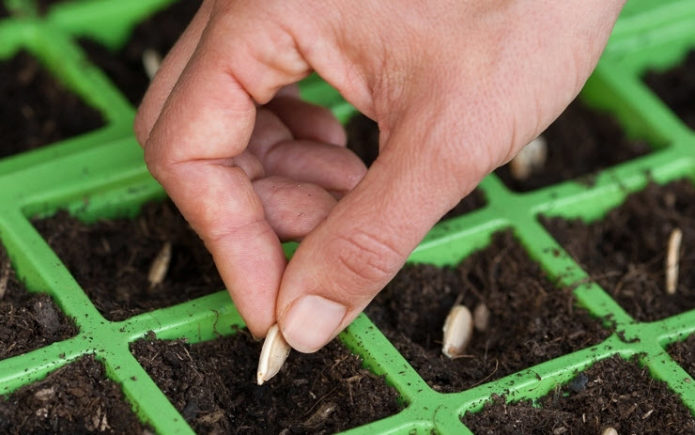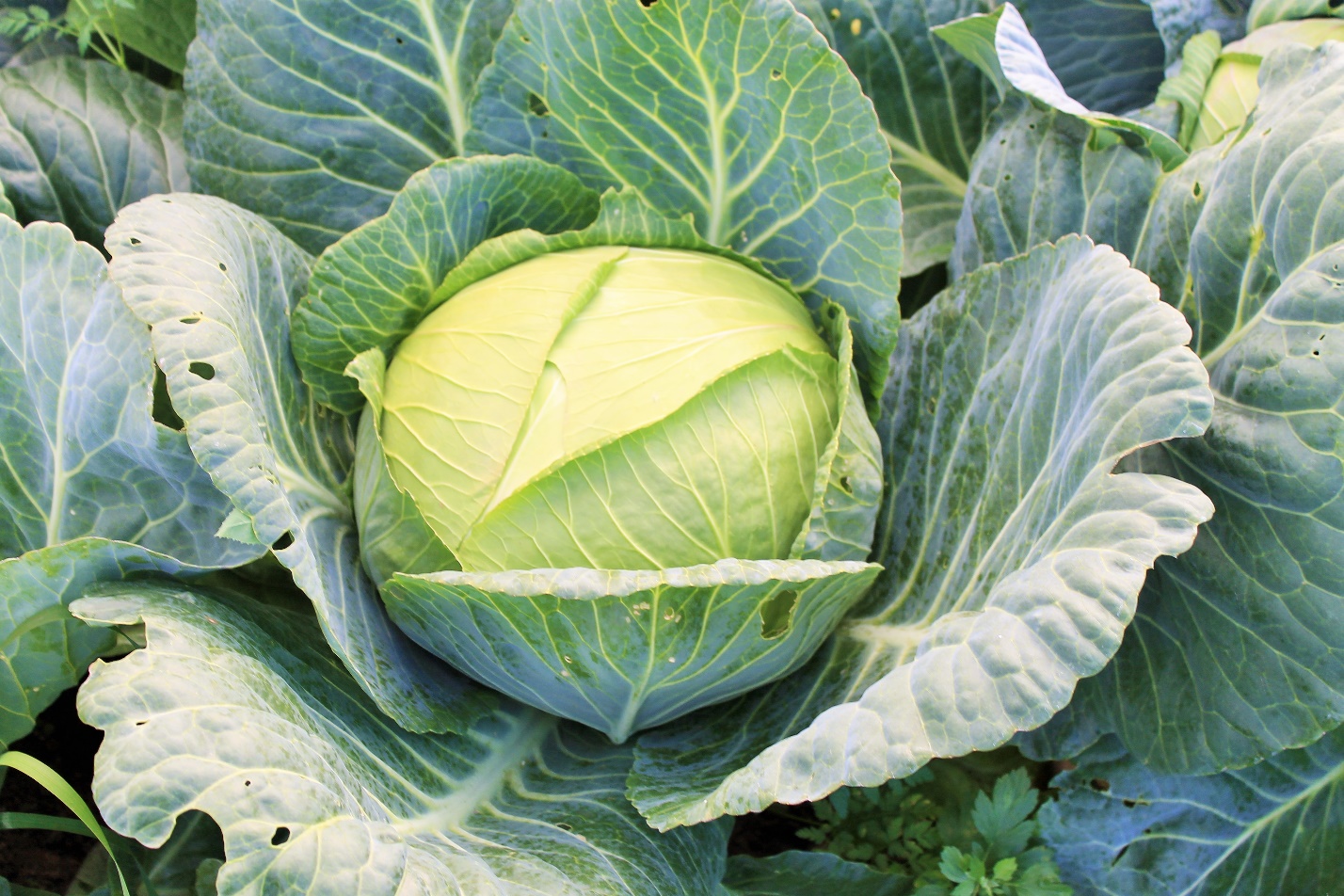Zucchini is not always grown via seedlings. But if you want to get a harvest very early, this technique is used. There is nothing difficult in this, the biggest problems can be maintaining the required temperature and light regime in an apartment.
Content
Dates of planting zucchini for seedlings, including according to the lunar calendar
The timing of sowing zucchini for seedlings is calculated based on the climate of the region and the moment when they want to get the first fruits. The fact is that zucchini do not tolerate cold weather at all. At 0 aboutC die instantly, and when the temperature drops to 10 aboutWith their growth dramatically slowed down, they become defenseless against diseases. Therefore, it is possible to plant seedlings in unprotected soil only when the weather is really warm: in the middle lane - not earlier than the beginning of summer.
Based on this, it turns out that it is possible to grow zucchini by May only in a greenhouse, and it is difficult to get a crop in unprotected soil before the second half of June. Sowing dates for marrow seedlings fall, thus, on the 20th of April. Of course, for greenhouse cultivation and for the southern regions this can be done a little earlier, and in the north and in Siberia, sowing for unprotected soil is carried out only around May 20.
In addition to general considerations, some gardeners are guided by the Lunar calendar, which advises to carry out garden manipulations in certain phases of the heavenly bodies. So, in 2018, it was recommended to plant zucchini on the growing moon: for example, from April 16 to April 28. A similar rule for 2019 recommends sowing seeds:
- from 6 to 18 April (especially - 7, 12, 18);
- from 6 to 18 May (best of all - 8, 15, 17);
- from June 4 to June 16 (optimally 5, 12, 14).
How to choose the right zucchini variety
It is becoming more and more difficult to choose a zucchini variety: even the number of registered varieties and hybrids has exceeded a hundred. There are also white-fruited, thick-skinned, and "zucchini", which are plucked at the ovary stage, they are even suitable for replacing cucumbers in a salad. In addition, zucchini can be climbing, like pumpkins, but most of the varieties in the State Register are compact bushy plants.
It seems that just 40 years ago we knew one zucchini - Gribovsky, which has been grown since 1943. He can be found now. From germination to the first harvest, a little over one and a half months pass. The short-cylindrical fruits are light green in color, weighing about 1 kg, and the white flesh tastes good. This variety was not very resistant to diseases, but among modern zucchini there are different in this sense.
In the late 1980s, Tsukesh's zucchini became incredibly popular. It ripens a little later, bears green fruits, and is highly productive. The taste is rated as good and excellent. Tsukesha gave an incentive to the selection of a whole branch of green-fruited zucchini, but at the same time, work was underway to develop varieties that bear fruit with yellow zucchini.
It is believed that yellow fruits are the healthiest. One of the yellow-fruited varieties is Zolotinka zucchini. Early ripe, medium-yielding, with beautiful fruits weighing up to 1 kg.
Generally speaking, it is necessary to choose a variety of zucchini according to many parameters: ripening period, type of pollination, habitat (greenhouse or open bed), purpose (for canning, cooking caviar, urgent use, etc.).
It is important that hybrids are usually better than varieties in terms of the totality of characteristics, but one cannot use their own seeds from them.
So, early ripening varieties are ready to please with the first fruits already on the 37th day after sowing the seeds, but they are far from the most delicious and poorly stored. Late ripening, on the contrary, can lie in the cellar until spring. It is necessary to clearly understand that the phrase "the best varieties of zucchini" does not make sense: there are varieties that fit certain requirements... However, all varieties of zucchini are quite unpretentious and yield a harvest relatively quickly.
Preparation for sowing zucchini
An ordinary family does not need a lot of bushes, so it is better not to think about the soil for growing seedlings and buy it ready-made in the store right away. After all, if you compose it yourself, it will be a problem to find peat (50%), humus (30%) and the rest - rotted sawdust and sod land. You also need to add a little azophoska to this mixture, then disinfect it with potassium permanganate, so it won't be cheaper.
With seeds it is even easier: there is nowhere to rush, you don't even need to soak them, the seeds of zucchini germinate perfectly dry. In addition, they are stored for many years, and you don't have to buy them every year. Only the seeds from your harvest must be prepared for sowing. At a minimum, choose the largest ones, hold for two hours in hot water (50 aboutC), then refrigerate. It will be nice to temper it by holding it in the refrigerator for a day. Germination is, after all, a whim: it is easier to sow them in pots 2-3 days earlier.
Sow - it is in pots, and not in a large box: zucchini do not tolerate a pick... It is best to take large peat pots, but you can also use plastic reusable pots with a sliding bottom.
It is difficult to plant zucchini from a common box: the smallest damage to the root system significantly inhibits their further growth.
Rules for sowing zucchini for seedlings
In a standard city apartment, in good heating conditions, zucchini seedlings are often strongly stretched. Therefore, if possible, they try to grow it in sunny greenhouses, where it is possible to illuminate the plants well and not give them too comfortable temperature conditions. If it is possible to keep the seedlings in the pots longer, it is better to take them larger, at least half a liter.
Pots with a diameter less than 8 cm for zucchini are unsuitable.
Sowing is very simple:
- Seeds are sown to a depth of 3-4 cm, watered well and kept at room temperature.
- After 4–5 days, seedlings will appear and, if you do not take action, they can destroy themselves in a couple of days. We urgently need to move the pots to a lighted cool place (no higher than 18 aboutC) and keep there for 4–5 days. Otherwise, you will have to re-sow: in 2-3 days in the warmth, the seedlings will become unusable.
- In the future, the seedlings are kept at room temperature, but they try to cool them by 5-7 degrees overnight.
Seedling care, especially growing seedlings at home
The most important thing in care is to provide the seedlings with good lighting and relative coolness. Then there will be no problems in its cultivation at all, and in a month it will grow into an absolutely viable bush, which, if correctly transplanted into the garden, will continue to grow, soon bloom and give fruits. The most important thing is not to overheat the first few days. And then - only light and moderate watering.
It is because of the temperature in the apartment in the spring that it can be difficult to grow squash seedlings.The owner will have to sacrifice comfort for a week, open a window, put on a light bulb ... It's easier to do all this in a greenhouse, but you can't leave the greenhouse even for a day.
Growing squash seedlings at home is much easier than cabbage, but more difficult than tomato.
After passing the critical period (4-5 days), the seedlings will normally take on the daytime temperature of both 24 and 18 aboutC, but it should be a little colder at night. Direct rays of the sun in April and May can be dangerous for seedlings: they need to provide powerful, but diffused lighting. Therefore, the southern window sill threatens with burns, and on the northern one, lighting equipment will be required. If the length of daylight in spring is sufficient, then the intensity of light radiation will have to tinker with. Phyto lamps or white light fluorescent lamps can easily solve the problem.
Watering seedlings is required infrequently, and only with water with a temperature of at least 25 aboutFROM... The soil should never dry out, but waterlogging is prohibited. Depending on the temperature in the apartment, you have to water the seedlings 1 or 2 times a week. From 40 to 100 ml of water is consumed per pot.
Zucchini and high humidity are not required. This is usually not a problem, but the seedling pots should not be too close to each other.
Zucchini seedlings manage to significantly impoverish the soil even in a month. Therefore, it must be fed at least once. Any complex fertilizer is applied 7-10 days after germination according to the instructions. If growth is going well, it is better to do without a second feeding. If it slows down, after 10 days, the seedlings are fertilized again using an infusion of wood ash.
When feeding, the nutrient solution is poured under the root, before and after watering the seedlings with clean water.
If it turns out that the seedlings are outgrowing, and the weather is still bad in the garden, you can carefully transfer the plants into larger pots with additional soil. Only this must be done without damaging the root system.
A week before disembarkation, the seedlings are taught to the breeze and low temperatures, periodically taking them to the balcony... No need to wait for flowering or leaf mass from seedlings: in the case of zucchini, 3-4 large leaves are the norm. Even with 1-2 leaves can be planted, especially if the seedlings are grown in peat pots.
Video: possible mistakes when growing seedlings
Planting seedlings in the garden
The vegetable garden should be equipped in a sunny place, prepared in advance in the traditional way for most vegetables. With deep digging, add per square meter about a bucket of humus and a handful of ash; on ordinary loamy or sandy loam soils, nothing else can be added. Seedling holes are dug out according to a sparse scheme: between the bushes there should be at least 70 cm, preferably a meter. Even in a fertilized bed, a bucket hole is made, where additional fertilizer is applied: a third of a bucket of humus and a handful of ash. We must try to plant seedlings when the sun does not bake, in cloudy weather.
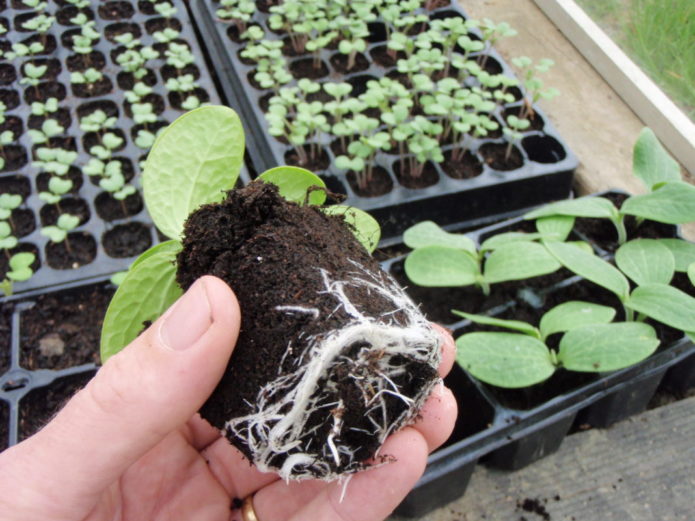
Even if the seedlings did not grow in peat pots, it is not very difficult to extract it without damaging the roots.
Soak the soil well in the hole and transfer the squash seedlings into it, trying not to damage the roots. Normally developed seedlings are planted "as is", the elongated ones are buried almost to the cotyledon leaves... After watering with warm water, they must be covered from the scorching sun with grass or spunbond. In case of risk of frost, a serious shelter is required. Until the seedlings take over and resume growth, they are watered every 2-3 days. Further care for the zucchini is not difficult.
Video: growing zucchini through seedlings
Farmers do not always grow squash seedlings. But if you want to bring the harvest closer, you can do it. Just keep in mind that the process will require monitoring the temperature and lighting, which is not always easy in a city apartment.
